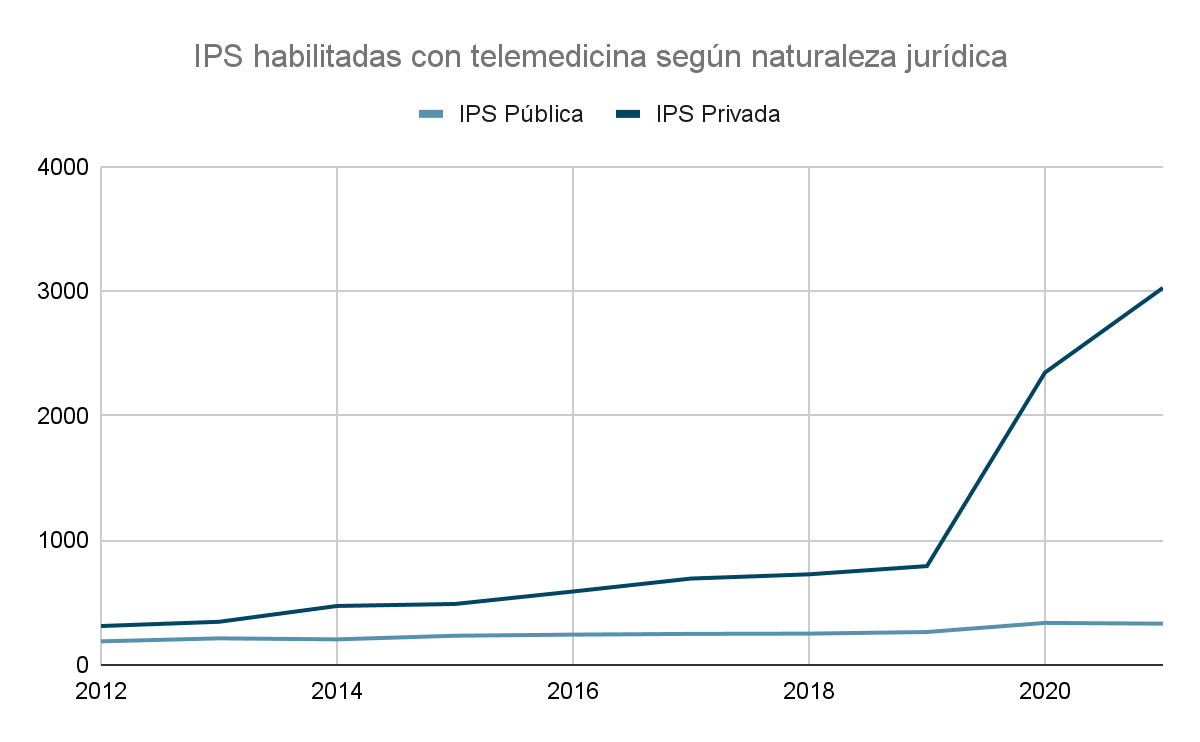Telemedicine belongs to the broad portfolio of services framed within telehealth. This service is associated with the use of technology to enable or facilitate medical care when the patient and their physician or health care team are not physically located in the same place. Originally, telehealth was used to facilitate the access of medical care to patients living in rural areas; however, over time and as a result of events like the global Covid-19 pandemic, this practice has become even more relevant in order to still be able to be treated by qualified healthcare professionals without needing to be physically present in the same location.
Undoubtedly, telehealth can provide solutions for certain challenges, such as the increasing demand for health services, the aging population, and the need to manage large amounts of data; but it also helps reduce the barriers of healthcare access and increases the speed in receiving medical care, which provides greater coverage and equity for remote areas, like in the case of Colombia that has significant inequality gaps between rural and urban areas.
One example demonstrating how this inequality is a structural problem that is intensified by socioeconomic variables and the country’s geography is that in remote or rural areas, the waiting time for a general medical appointment is 6 days, 16 days for a gynecologist appointment, and 38 days for a pediatric appointment, as opposed to 2, 8, and 7 days in urban areas, respectively.*
In 2010, Colombia began establishing the regulatory framework for the development of telehealth across the country with Law 1419. It established the basic principles such as the creation of a Telehealth Advisory Committee, the development of a connectivity map, through the allocation of 5% of funds to strengthen the telecommunications necessary to provide coverage, access, and be able to include these telehealth services in the Health Benefits Plan. However, the Ministry of Health did not initiate the regulation of telehealth as a tool to improve access, resolution capacity, continuity, and quality of clinical care until the installment of Resolution 2654 in 2019.
Lastly, until the arrival of the pandemic, there were a series of concrete efforts to accelerate the integration of these healthcare services, especially in the IPS as a tool to provide continuity of care. As of December 2021, only 4.27% of the IPSs authorized to operate in the country were providing services through telemedicine in 370 municipalities. This is equivalent to 3,368 clinics and hospitals facilitating more than 12,500 telehealth services, of which only 331 are being offered from the public sector.
However, telemedicine and telehealth have not necessarily translated into better coverage and access throughout the nation. In Colombia, public hospitals mainly serve rural and hard-to-reach areas where the medical services offered through technology have not been able to impact the population in a significant way.

Source: Elaboration based on data from the Special Registry of Health Service Providers – REPS (2021).
After analyzing the numbers, we were able to identify that telemedicine services offered by Public IPSs increased by 25.4% while the private ones had increased by 281.5% between 2019 and 2021. These differences are also evident with regards to coverage at the territorial level. Of the 3,368 IPS that provided telemedicine services, 76% (2,500) were located in Antioquia, Bogotá, Valle del Cauca, Cundinamarca, Santander, Barranquilla, Córdoba, Nariño, Cartagena and Cesar. Meanwhile, in more remote areas like the Amazonas, Guainía, Guaviare, Vaupés and Vichada, there were only 58 institutions that offered telemedicine services.
In addition, there are other factors to consider, like gaps in connectivity. For example, it is clear that 56.5% of the nation has Internet service, but, in the larger cities this percentage is 66.5%, while in the populated and dispersed rural areas it is only 23.8%, making the appropriation and use of telemedicine complicated. This situation provides a preview of the challenges the country faces in terms of access, coverage, and implementation of telemedicine, especially if telemedicine is supposed to be the leading alternative meant to close the country’s significant inequality gaps.
The new government intends to extend primary healthcare to the entire nation, and telehealth will play an important role in this regard. In addition, the government has expressed the need to invest in education and technology in order to build high quality knowledge like in the field of telemedicine. This provides an opportunity for conversations between the private and public sectors in order to generate capacities and enough knowledge transfer that will allow greater appropriation and use of these services in Colombia. Additionally, the above should help strengthen the capacities of public IPS, since it provides greater coverage in territories that are difficult to access and where it can really be consolidated as an alternative to improve the care of the general population as well as generate greater equity and efficiency in healthcare services.
This is exactly what the private sector must address in the new national context; that is, finding opportunities for joint work in which the capabilities, tools, and knowledge that are readily available can effectively contribute to solving the socioeconomic challenges that the national health system faces in line with the objectives of the incoming government, but above all, for the benefit of the country’s development and the health of all Colombians.
Santiago Rivas GarcíaConsultor de Asuntos Públicos LLYC
Luisa Fernanda Ortíz QuiñónezGerente de Asuntos Públicos LLYC




